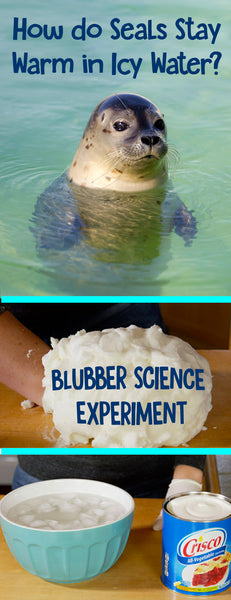How do Seals Stay Warm in Icy Water? | Easy Science for Kids
 Ever wonder how seals stay warm in icy water? Try this blubber science experiment to find out! This is a great winter science experiment that shows kids how a thick layer of fat helps keep arctic animals like seals warm in cold temperatures.
Ever wonder how seals stay warm in icy water? Try this blubber science experiment to find out! This is a great winter science experiment that shows kids how a thick layer of fat helps keep arctic animals like seals warm in cold temperatures.
For this blubber experiment, you will need shortening, a bowl, ice cubes, cold water, disposable gloves, and a plastic bag. This easy science experiment is perfect for kids ages 3 and older with adult supervision. It takes approximately 15 minutes.
Start by having kids place their hands in a bowl filled with ice cubes and cold water. They will discover that the water is freezing! There might be lots of shouting "OUCH!!" "BRRR!!" and "IT'S TOO COLD!" involved.
Then, have them put on the rubber glove and cover their hand in shortening, which will act as an insulator or like blubber. Wrap a plastic bag around their shortening-covered hand and then have them place it back into that same icy cold water. They will discover that their hand is nice and warm! This is what the water feels like to a seal who has blubber to insulate it from the cold. Pretty neat!!
If you enjoy doing this science experiment with me, please like the video, share it with a friend and subscribe to my YouTube channel! For more fun science, check out my sink or float experiment!

